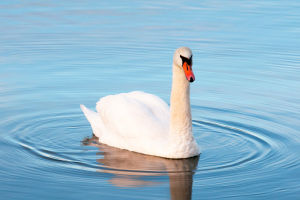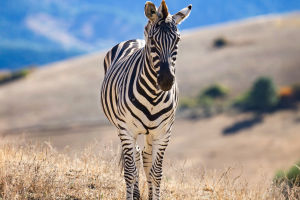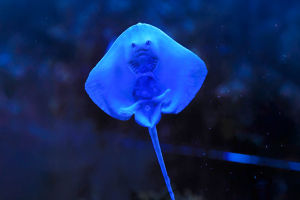
Swans are majestic creatures, with their graceful movements and stunning plumage making them a favorite subject for photographers.
Capturing the elegance of these birds in their natural habitat requires skill, patience, and the right techniques.
Whether you are a seasoned photographer or a beginner, following these tips will help you photograph swans with the beauty they deserve!
1. Choosing the Right Time and Light
Swans are most active during the early morning and late afternoon, so these "golden hours" offer the best lighting for photographs. The soft, warm light during these times helps create beautiful contrasts and enhances the texture of the swan's feathers.
Avoid midday sun, as harsh light can create unflattering shadows and overexposed highlights. The calm, reflective water during these hours also adds a serene quality to the shot, making swans look even more majestic.
2. Focus on Composition
When photographing swans, composition plays a key role in capturing their elegance. Use the rule of thirds to position the swan off-center, allowing the viewer’s eye to naturally follow its movements. If the swan is swimming, include some of the water around it to give context to the image. The surrounding environment—whether it's a lake, river, or marsh—can add depth and atmosphere. Look for natural frames, like overhanging branches or reeds, to add layers to your shot.
3. Get Close, But Not Too Close
Swans are graceful but can be quite sensitive to human presence. Use a telephoto lens to capture them from a distance without disturbing their natural behavior. A lens with a focal length of 200mm or more allows you to photograph the birds up close while maintaining a respectful distance. This is especially important to avoid startling them, which could lead to them flying off or swimming away. Focus on their features like their long necks, beaks, and eye expressions for an intimate shot.
4. Capture Their Behavior
Swans are known for their social behavior and interactions. Capturing them in moments of courtship, feeding, or even preening will add emotion and context to your photographs. Be patient, as these moments may take time to unfold, but they make for stunning images. The elegance of a pair of swans gliding across the water in unison or a mother swan tending to her cygnets adds a narrative quality to the photograph.
5. Utilize Reflections in Water
Swans are often found near lakes or ponds, and their graceful reflections in the water provide an excellent opportunity for creative shots. Look for a calm body of water with minimal ripples, as it will reflect the bird's image beautifully.
You can use the symmetry created by the reflection to add balance and elegance to the composition. Shooting during sunrise or sunset will enhance the colors in the reflection, providing a stunning contrast to the swan.
6. Capture the Details
While wide shots of swans in their environment are stunning, don’t forget to zoom in on the finer details. Their feathers, the curve of their necks, or the texture of their beaks can create compelling close-up images. Focus on sharp details like water droplets on their feathers, which can add a touch of freshness to your photos. For these close-ups, use a macro lens or a long zoom lens to fill the frame with their intricate features.
7. Mind the Background
A cluttered background can detract from the beauty of the swan, so pay attention to what’s behind your subject. Opt for a simple, unobtrusive backdrop, like soft greenery, blue skies, or calm waters. If there are distracting elements, adjust your angle or use a wide aperture (low f-stop) to blur the background, making the swan the focal point of the shot.
8. Use Burst Mode for Action Shots
Swans are not always slow and graceful. When capturing them in flight or during other active moments, use the burst mode on your camera. This will allow you to take multiple frames in quick succession, increasing the chances of capturing a perfect action shot. When photographing a swan taking off or landing, ensure the background complements the motion—avoid shooting into bright light, as it can lead to silhouetted images.
9. Be Patient and Respectful
Patience is crucial when photographing wildlife, including swans. They may take time to appear in the frame or move into a better position. Avoid rushing or forcing a shot, as this can lead to a missed opportunity or disturb the bird’s natural behavior. Keep a respectful distance, and remember that your presence should not alter the swan’s environment.
Photographing swans allows you to capture their natural beauty and grace in stunning ways. With the right timing, equipment, and techniques, you can create powerful images that reflect their elegance in nature. Focus on composition, utilize natural lighting, and patiently wait for the right moments to unfold. Whether you’re shooting a lone swan gliding peacefully on the water or a family of swans interacting, the key is to remain respectful of their space while using your camera to highlight their majesty.
With these tips, you’ll be on your way to capturing breathtaking swan photographs!
How to Photograph Swans
Video by Kevin Hatley Photography


